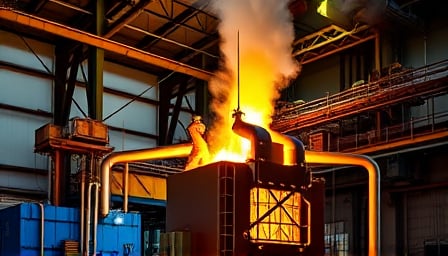Century Aluminum Co. Navigates Tariff Changes and Market Dynamics
In a significant development for the metals and mining sector, Century Aluminum Co., a leading American materials company, has expressed strong support for the recent increase in aluminum tariffs by the U.S. government. On June 2, 2025, President Trump announced a bold move to double the Section 232 tariffs on foreign primary aluminum imports from 25% to 50%. This decision, aimed at bolstering domestic production of critical metals, has been met with applause from Century Aluminum, which sees it as a crucial step in safeguarding the U.S. supply of metals essential for construction, transportation, and packaging.
Impact on Century Aluminum and the Market
The tariff increase is expected to significantly impact Century Aluminum’s operations and the broader aluminum market. As the largest domestic primary aluminum producer, Century Aluminum stands to benefit from enhanced protection against foreign competition. The company has announced ambitious plans to build the first new U.S. aluminum smelter in 50 years, aiming to double its domestic production capacity. This move not only underscores Century Aluminum’s commitment to expanding its operations but also highlights its reliance on government trade policies to maintain a competitive edge.
However, the company’s heavy dependence on such policies also exposes it to potential risks should there be any shifts in trade policy direction. Despite these challenges, the tariff increase has already had a noticeable effect on the market, with Century Aluminum’s stock experiencing a significant surge. On the day of the announcement, Century Aluminum’s shares jumped by over 28%, reflecting investor optimism about the company’s future prospects in a more protected domestic market.
Broader Market Reactions
The announcement of increased tariffs has also had ripple effects across the broader market. On June 2, 2025, U.S. stock indices opened lower, with the NASDAQ Composite, Dow Jones, and S&P 500 all experiencing declines. However, steel and aluminum stocks, including Century Aluminum, saw substantial gains, with steel stocks rising over 10%. This divergence highlights the sector-specific impact of the tariff increase, benefiting domestic producers while raising concerns about potential retaliatory measures from trading partners.
Global Trade Tensions and Economic Implications
The tariff increase comes amid ongoing trade tensions between the U.S. and its trading partners, including China and the EU. The European Union has expressed regret over the decision and indicated its readiness to take countermeasures. Similarly, South Korea has convened an emergency meeting to discuss responses to the doubled tariffs on steel and aluminum. These developments underscore the complex interplay between trade policies, market dynamics, and international relations.
Conclusion
Century Aluminum Co.’s enthusiastic response to the increased aluminum tariffs reflects its strategic positioning within the U.S. metals and mining sector. While the company stands to benefit from enhanced protection against foreign competition, its future success will also depend on navigating the challenges posed by global trade tensions and potential shifts in trade policy. As the situation evolves, stakeholders will be closely watching how Century Aluminum and the broader market adapt to these changes.
